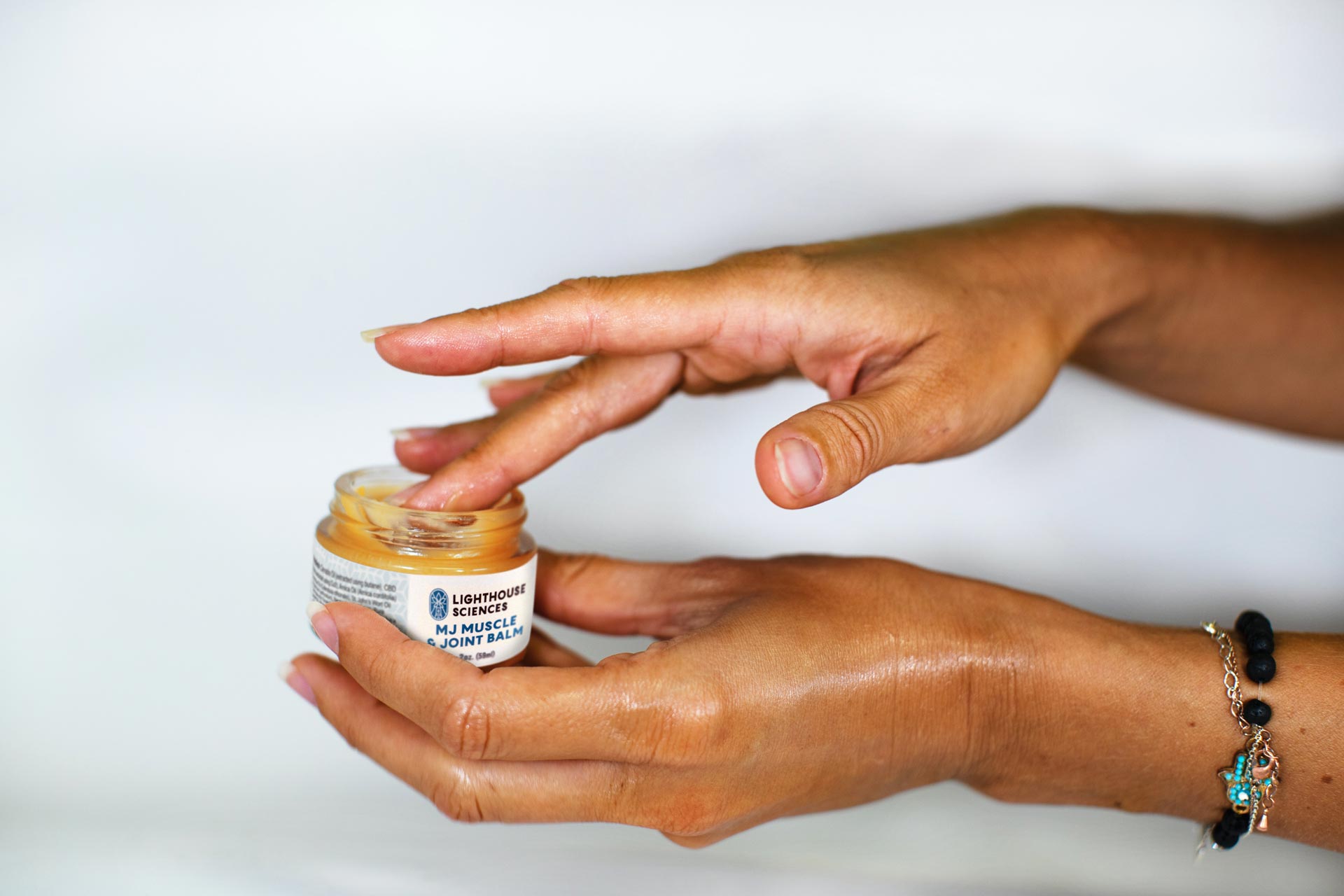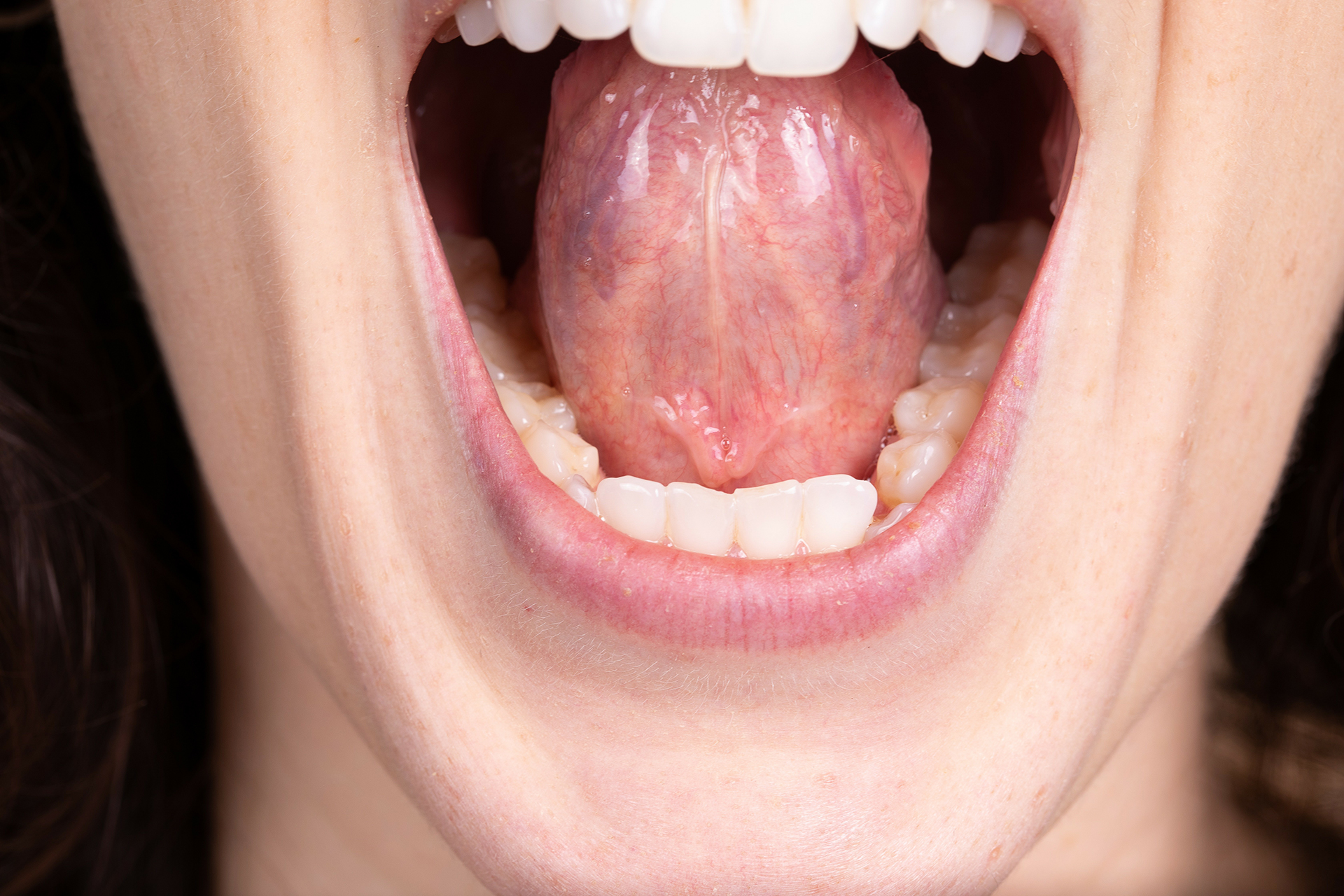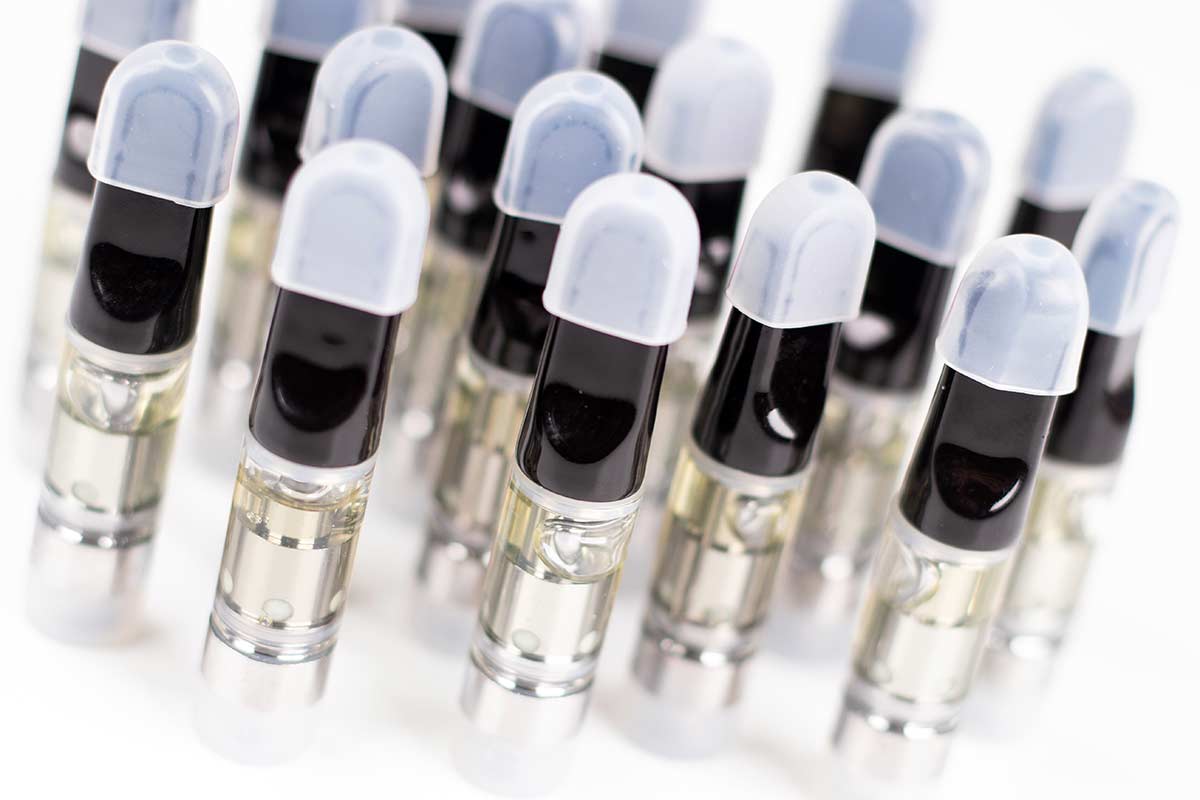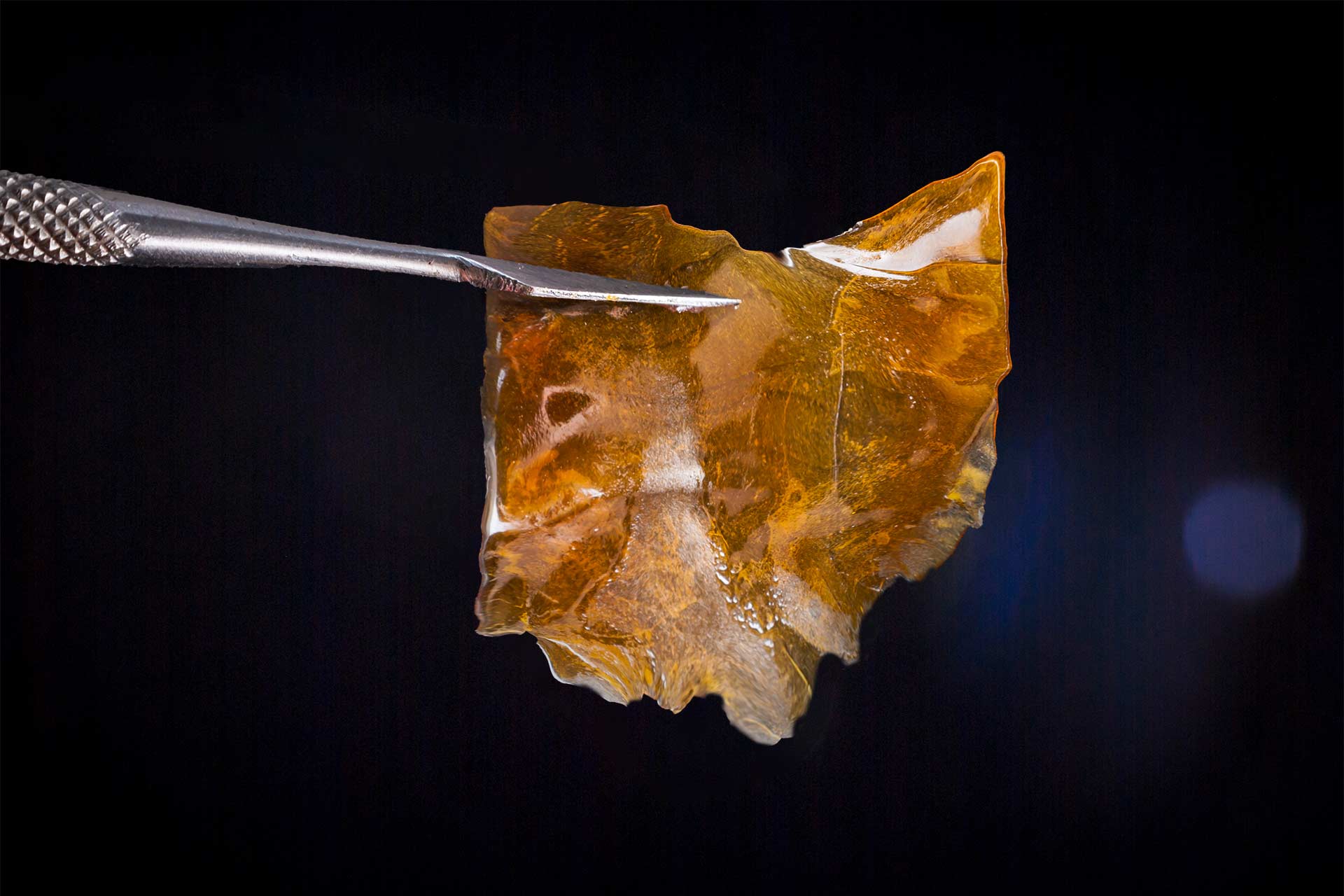Everything Ohio Cannabis Patients Should Know About Cannabis Muscle Salves
Topical solutions for muscle discomfort now include many cannabis-infused options.
A cannabis muscle salve is any type of ointment, spray, or balm that can be applied to an affected area to relieve varying levels of discomfort. Cannabis muscle salves are ideal for those who exercise or experience general discomfort from day-to-day activities. There are cannabis salves with both CBD and THC on the market.
Ointments and salves and balms, oh my!
Call them what you want, but for centuries people have used these thick creams and lotions for topical relief.
And in the years since the introduction of salves into everyday life, wellness-minded individuals have added various natural ingredients to increase their physical benefits.
Primarily used to relieve discomfort—and treat minor muscle aches and pains—salves penetrate the skin for immediate relief.
And while essential oil ingredients have ranged from peppermint and eucalyptus to lavender and marjoram, recent years have seen a new and potentially assistive component come into play.
Cannabis Salves
With its long reputation as a highly medicinal plant, it should be no shock that cannabis has entered the muscle salve arena.
And when you examine the cannabis plant, it makes total sense.
Cannabinoids are the compounds in cannabis that bring all those medicinal effects to life. The physical relief and mental euphoria are all thanks to cannabinoids like CBD and THC (and many others).
But where consuming cannabinoids through vapes, flower, or edibles delivers one general reaction, a cannabis-powered muscle salve imparts fast, targeted relief to the affected area.
Full of naturally extracted compounds, cannabis salves are beneficial for soothing inflamed muscles after exercise or for general soreness. Coupled with those physical advantages, cannabis salves also reduce everyday stress and anxiety.
So, whether it’s after a hard day’s work, strenuous exercise, or just the usual hassles associated with everyday life, cannabis salves can help you muscle through the discomfort.
But what are the differences between CBD and THC salves? And what are the characteristics and benefits of each cannabinoid? Let’s apply to the affected area and find out!

What is a CBD Salve with THC?
Salve is the umbrella term for therapeutic balms or creams used topically on the skin. Most salves are made of moisturizing oils, such as the increasingly ubiquitous coconut oil and several other soothing ingredients. As the name implies, cannabis salves are ointments or balms that include cannabinoids as an active ingredient. Taken even further, CBD salves with THC have a medicinal combination of the cannabinoids CBD and THC.
CBD and THC salves are said to have the potential to relieve pain in the muscles and joints and soothe certain skin conditions. But, above all else, these salves are credited with bringing a feeling of relaxation and tranquility.
How Does CBD Salve Work?
Cannabinoids are the compounds in cannabis that spark physical and psychoactive reactions in the patient.
When infused in oil or salve, these compounds can be absorbed through the skin, delivering a so-called “cannabis high” to the affected area.
However, it’s important to remember that one cannot absorb THC or CBD into the bloodstream via the skin. Muscle salves work on a peripheral basis—meaning they are not absorbed into the bloodstream and are therefore non-psychoactive.
As for the science behind how CBD salve works, we’ll need to turn to some medical studies.
According to research, the cannabinoid ingredients in topicals bind with the body’s CB2 (cannabinoid-2) receptors in the skin, interacting with our body’s endocannabinoid system and slowing the pain signals from the brain. Meanwhile, a recent study on the positive effect of CBD on athletes shows immense promise, concluding that the compound warrants further investigation into its physical advantages.
Can CBD Salve Make You Sleepy?
No! CBD balm is applied to the skin and, as such, does not enter the bloodstream. As a result, cannabis-induced sleepiness or “couch-lock” is far more prevalent in products rich in THC, which is the compound that induces euphoria or makes you “feel stoned.”
Moreover, how our bodies interact with CBD is entirely different from their reaction to THC. CBD can have energizing effects but also relax the body for a state of calmness and relaxation.
So, no, it doesn’t make you sleepy—but in a way, it can help you sleep.
That might sound a bit confusing, but think about it this way: Indica-heavy strains of cannabis have a way of “turning the brain off.” That is, it has the potential to make you feel physically tired. On the other hand, CBD balms applied to specific areas soothe aches and discomfort, alleviating some factors that may hinder your ability to fall asleep comfortably.
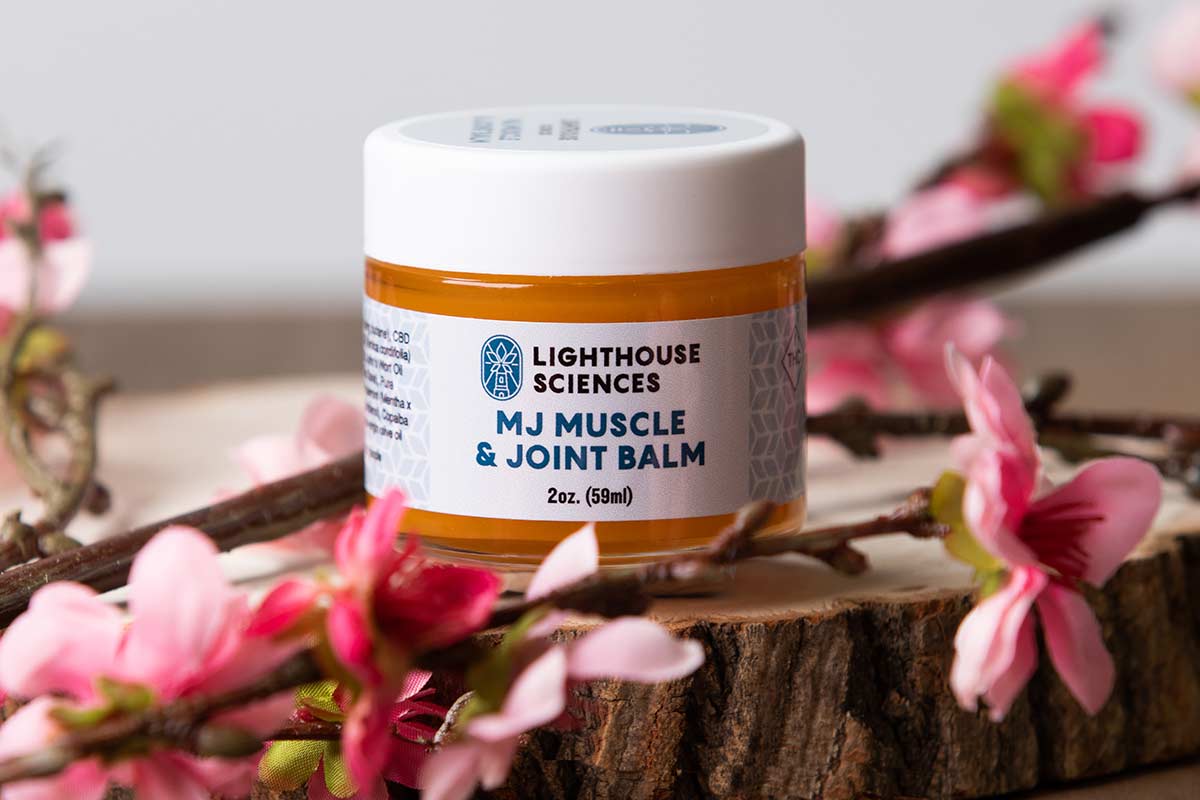
How Fast do CBD Salves Work?
The short answer is about 15-30 minutes or up to an hour, peaking after about 90 minutes. But, there’s a deeper conversation to have here.
How quickly your body feels the effects of CBD salve depends on a few factors: What’s the dosage? How often do you utilize CBD salve and other cannabis products? What’s your body’s response to certain cannabis products?
When CBD salve is applied directly to the skin, the compound is absorbed slowly, interacting with your body’s localized cannabinoid receptors. Therefore, some CBD products should be used liberally to overcome the low cannabinoid absorption rate typical to the skin, which depends entirely on the type of muscle discomfort you seek to relieve.
Does CBD Salve Work For Nerve Pain?
While research into nerve pain and CBD is slightly limited, experts believe the compound provides quantifiable relief. Moreover, CBD’s mild side effects make it a generally safe and acceptable alternative to other nerve pain relievers.
One study demonstrated the potential of CBD against nerve pain. The study, from 2020, paired two groups: a CBD group and a placebo.
Both groups reported varying degrees of nerve pain; however, the CBD group reported a significant reduction in discomfort. The findings demonstrate that CBD has the potential to relieve and improve the overall wellness of those experiencing nerve discomfort.
What Can Cannabis Salve Be Used For?
Just as other cannabis products boast many different uses, cannabis salves are no one-trick pony.
The benefits of cannabis salves depend on the ratio of CBD to THC, as each compound contributes a unique set of benefits. Cannabis salves can be derived from THC-dominant strains (Type 1), a combination of CBD and THC (Type II), or CBD-dominant strains (Type III). Today, the market is rich in all types of salves—each with a long list of potential uses, including relief from:
- Sore muscles
- Post-exercise discomfort
- Joint discomfort
- Inflamed joints
- Irritated skin
- Dry skin
- Sensitive skin
- Stress and frustration
- Occasional anxiety
- General nervousness

Does THC Salve Have Side Effects?
Topical cannabis products such as CBD-dominant salves, THC-dominant salves, and salves that combine the two compounds are unlikely to cause side effects.
This is mainly because the cannabinoids only bind and activate your localized endocannabinoid receptors in your skin and will not enter your bloodstream.
However, any topical solution or skincare product can develop skin irritation, a minor rash, or some form of allergic reaction. If you do experience any such side effects, consult a dermatologist.
Click here to learn more about Lighthouse Sciences premium cannabis topicals.
What is Cannabis Sublingual Spray?
Sublingual sprays are a quicker way for cannabis to enter the patients’ system.
Sublingual means “under the tongue,” as such, cannabis sublingual sprays should be applied directly beneath the tongue and inside the cheeks. The mucous membranes under our tongues help efficiently deliver cannabinoids directly to the bloodstream, causing the patient to feel the effects quicker while also helping them measure their desired dosage more accurately.
- What Does Sublingual Mean?
- What is a Sublingual Cannabis Spray?
- What are Sublingual Cannabis Sprays Made Of?
- How do you Consume Sublingual Cannabis Products?
- How do Sublingual Cannabis Sprays Work in the Body?
- What do you Need to Know about Sublingual Cannabis Dosing?
- Can you Microdose with Sublinguals?
- What is the Average Dosage Amount for Sublingual Cannabis Spray?
- How Long Does it Take to Feel the Effects of Cannabis Sublingual Sprays?
- What are the Advantages of Sublingual Cannabis Spray?
When you feel the burden of a long day, the pressure of a new project at work, or the stress of the daily grind, it can be easy to languish in worry.
Luckily, cannabis sublingual sprays are a reliable tension tamer designed to lift you up and fight that sinking feeling.
A simple spray under the tongue, and you’ll float through the day instead of wading through the muck.
The soothing waves of relaxation will unburden you and almost instantly reduce your stress.
What Does Sublingual Mean?
The word “sublingual” might conjure mystical images of subterranean creatures slithering in the deep, cool earth. However, the term has a much less epic meaning—it simply means “below the tongue.”
In the case of “sublingual” products, this word means something placed under our tongues where it dissolves and takes effect quickly.
The mucous membranes under our tongues are an efficient distribution center for substances, with permeability and porousness that make it the perfect spot to dissolve and ingest medical cannabis sprays.
What is a Sublingual Cannabis Spray?
Remember the breath-freshening spray craze of the ’70s? And then again in the ’90s? It seemed like everyone had the minty-fresh scent of Binaca wafting from their mouths.
Sublingual sprays are reminiscent of those breath fresheners, except they are sprayed directly under the tongue instead of on top of it.
And instead of curing the occasional bout of bad breath, sublingual cannabis sprays can ease physical tension, catalyze soothing relaxation, and supply a host of benefits unique to the cannabinoids THC and CBD.
What are Sublingual Cannabis Sprays Made Of?
Most cannabis sublingual sprays are made from pure cannabis extract and a solvent (usually alcohol).
Recently, sprays that use oil in place of alcohol have grown in popularity, as some describe oil-based sprays as gentler tasting than alcohol-based sprays.
You can find sublingual sprays that deliver a dose of THC, or you can look for CBD sprays. Either way, there is a spray to suit any medical cannabis patient.
How do you Consume Sublingual Cannabis Products?
To make the most of your sublingual spray experience, you should shake your bottle first and then spray the desired amount under your tongue and the insides of your cheeks.
The cheeks and gums have vascularized mucosal membranes, just like the membranes under the tongue, so spritzing a bit of cannabis spray on your cheeks will work just like a sublingual.
With all sublingual products, including sprays, you should try to hold the dose under your tongue and in your cheeks as long as you can.
The spray needs to maintain contact with the membranes of your cheeks and sub-tongue area for as much time as possible.
If you don’t hold the product in your mouth and let it dissolve for a bit, you might not get the desired outcome— and instead of that floaty, wistful feeling you’re aiming for, you might feel nothing at all.
First-timers might think that their sublingual did not work when they just didn’t give the product time to permeate through the mucosal membranes.
To feel the positive effects of your sublingual, you should:
- Get your mouth as dry as possible by swallowing all the saliva
- Spray the product directly under your tongue
- Swirl the product around your inner cheeks and gums with your tongue
- Avoid eating or drinking for at least 10 minutes
- After you’ve kept the sublingual in your mouth for as long as possible, you can swallow whatever is leftover and carry on with business as usual
How do Sublingual Cannabis Sprays Work in the Body?
Many patients sing the praises of edibles and consider nothing else.
However, edibles are absorbed through the digestive system, which can be a slow process. And when eaten, THC can bring an intense, long-lasting experience that might make some patients uncomfortable.
Unlike edibles, sublingual sprays are not processed within the digestive system—they are dissolved within the mouth, where plenty of ultra-permeable capillaries efficiently transmits the cannabinoids straight to the bloodstream.
But because sublingual sprays don’t rely on the digestive tract and therefore primarily bypass liver metabolism, the THC doesn’t have much of a chance to convert to a more psychoactive form.
Beginners and those looking for a less-potent mental experience can reach for their sublingual spray with the reassurance of a consistent, reliable euphoria.
What do you Need to Know about Sublingual Cannabis Dosing?
Sublingual sprays are great for consumers who want an easily controlled dose of cannabinoids (THC and/or CBD).
Each spray contains a certain amount of cannabinoids, which means that spraying more gives you more cannabinoids. To figure out the dosing of your particular sublingual cannabis spray, you should look at the amount of THC or CBD listed on the bottle.
Pay careful attention to whether the product lists THC per individual spray or per bottle—if the amount listed is per bottle, you’ll have to do some math to figure out how much THC is in each spray.
Simply divide the amount of total THC by the number of sprays or doses per bottle, and that’s how much THC is in each spray.
Most Sublingual Cannabis Sprays (ours, for example) list the percentage of cannabinoids in each spray, making things easy.
What is the Average Dosage Amount for Sublingual Cannabis Spray?
The average dosage is 2.5 mg of THC plus 3mg CBD per spray, but some sublingual cannabis sprays can contain as much as 5 mg of THC per individual spray.
Always double-check the packaging of your sublingual spray to make sure you’re getting the appropriate dose for your needs.
How Long Does it Take to Feel the Effects of Cannabis Sublingual Sprays?
Usually, the effects of sublingual sprays will kick in within 5 to 45 minutes.
Because the onset might occur within such a wide range of time, we recommend you wait at least an hour before spraying a second dose.
Give your spray some time to do its thing.
On the flipside, some patients find that their product is extremely fast-acting, and they feel it within a few minutes!
Can you Microdose with Sublinguals?
Absolutely.
In fact, sublingual sprays can make microdosing simpler than other more traditional methods of THC consumption.
Sublinguals are popular within the microdosing community because small doses can be administered precisely and definitively.
With these microdoses, patients can avoid some of the more intense effects of THC while experiencing manageable, easy-going relief.
What are the Advantages of Sublingual Cannabis Spray?
THC oral sprays are a joy for patients looking for an easy, breezy way to get through their day or those who want quiet and well-balanced night-time relaxation.
Some benefits of sublingual sprays include:
- Steering clear of smoke and the physical effects of combustion: while vaping and other smokeless forms of cannabis consumption also allow you to avoid smoking, sprays do not involve inhalation or the respiratory system.
- Controlling and tracking your doses: many microdosers, beginners, and pros choose sprays over other less-controllable methods.
- Bypassing the digestive tract: THC sublinguals make their way directly to the bloodstream, inspiring a more reliable, serene experience.
- Honoring discretion: sublingual sprays are perfect for discrete patients due to their ease of transport and lack of aroma.
- Enlivening your taste buds: most sprays come in bright and natural flavors, such as lemon, mint, or cinnamon, which means that giving yourself a little spritz is fun and refreshing from start to finish.
Are you ready to explore our precision-metered oral (sublingual) sprays? Click here.
What is Cannabis Vape Oil?
The oil in vape pens consists of a potent concentrate containing THC and other notable medical cannabis compounds.
Medical cannabis vape oil is a mixture of cannabinoids, terpenes, solvents, and flavors. Utilizing a vape pen, patients access various cannabis compounds, like THC and CBD, which deliver the desired effects. Patients can accomplish this by heating the vape oil through a push-button method or inhaling.
Vaping is one of the most efficient and potent ways to consume medical cannabis, delivering a highly-effective medicinal experience.
Vape oil (also often called “THC oil” or “vape juice”) is heated in a device called a vape pen, which is a state-of-the-art apparatus that makes the process straightforward and comfortable.
What are THC Cartridges Filled With?
The main ingredient of THC cartridges (also called “cannabis cartridges” or simply “carts”) is also the ingredient that makes them so unique: THC oil. Various extraction methods release this potent medicinal oil from the cannabis plant.
When the extraction process is through, what’s left behind is a viscous, potent concentrate that contains plenty of the plant’s natural cannabinoids, including THC.
Most medical cannabis oil cartridges contain a significant amount of THC (typically testing between 60% and 80%). In addition, CBD cartridges are available for those uninterested in THC’s psychoactive effects. But for patients looking for medicinal relief, THC-laden concentrates are ideal.
Some producers add flavors and aromas from terpenes to enhance the potency and experience of their medicinal vape oil. Terpenes are natural plant compounds that impart scents and tastes and improve the overall therapeutic experience through the “entourage effect.”
THC cartridges might also contain extra terpenes as a natural thinner for cannabis oil. As mentioned above, terpenes occur naturally in the cannabis plant, so added terpenes only enhance the medicinal vaping experience.
Some companies include additives like coconut oil, glycols, and glycerin to create a less viscous, thinner concentrate. It is always a good idea to check the labels of your concentrates and ask questions at your dispensary if you have concerns about additives.
THC cartridges are portable and straightforward, and they do not leave a mess, a strong odor, or a cloud of smoke.
For many, cartridges are the preferred tool for consuming medical cannabis concentrates. Still, to reap THC oil’s many benefits, you should select a vape pen that lets you heat the oil to a suitable temperature to maximize your experience.

What Temperature is Required to Vape THC Oil Cartridges?
Depending on the specs of your device, you may be able to ramp up or cool down the vape oil’s heat. Finding a vape pen that lets you set the temperature is beneficial.
When consuming medicinal cannabis from a bowl or joint, the temperature must be high enough for combustion. Incredibly, the point of combustion can be more than 2,000-degrees Fahrenheit!
At such steep temperatures, cannabis loses flavor and potency.
On the other hand, vaping lets you heat cannabis oil at significantly lower temperatures. These low temps preserve flavors and aromas and allow the terpenes to shine. Therefore, determining the appropriate vape temperature setting can dramatically improve the quality of your experience.
Low Temp Vaping (325-350°F)
A lower temperature is excellent for new patients or those looking for a milder experience.
THC has a boiling point of 315°F, a temperature at which you will be able to feel its pleasant, gentle effects.
Adverse side effects of THC consumption are much less prominent when vaping at low temps, and the coolness of the vapor means less coughing and throat irritation. At this low temperature, you’ll also be able to taste and enjoy the citrusy sweet notes of your oil.
Advantages:
- Perfect for new patients
- Flavorful
- Less-prominent side effects
- Calming and soothing
Disadvantages:
- Not ideal for advanced or seasoned consumers
- Fewer cannabinoids activated
Medium Temp Vaping (350-400°F)
Vaping at a medium temperature activates more cannabinoids than at low temps yet still delivers a significant amount of terpenes. In addition, medium temp vapor is smooth and warm and may appeal to patients interested in a more traditional medicinal cannabis experience.
At medium temperatures, THC’s psychoactive effects are more present and powerful. As a result, you can look forward to relaxation and euphoria while still experiencing the full flavors of included terpenes.
Advantages:
- Stronger medicinal THC effects
- More activated cannabinoids
- Terpenes remain intact
- Soothing, warm vapor
Disadvantages:
- A more intense experience that might be uncomfortable for new patients
- Side effects become more likely
High Temp Vaping (400-430°F)
High-temperature vaping can be excellent for experienced patients.
THC is highly activated at these temperatures, so you’ll get the maximum medicinal benefits. However, the vapor will be less flavorful and aromatic due to terpene degradation. Nevertheless, high-temperature vaping might be suitable if you seek intense relief and don’t mind terpene loss.
Advantages:
- Amplified medicinal relief
- Strong positive THC side effects
- Cannabinoids are activated at a high rate
- Resembles a traditional cannabis consumption experience
Disadvantages:
- The intensity may be uncomfortable for new patients
- Can induce coughing
- Fewer terpenes are released, causing potential flavor-loss
If you’re new to vaping, we suggest you start at lower temperatures—you can always work your way up to higher heat levels.
However, lower temps are ideal for patients interested in microdosing. And you might want to reserve high-temperature vaping for times when you’re good to go all-in or for bedtime.
How Do You Vape THC Oil?
To vape THC oil, you must heat the oil and inhale it through a vaporizing device like the ever-popular vape pen.
Vape pens provide a nearly-effortless, gratifying experience for patients. Lighthouse Sciences’ proprietary vape pen doesn’t require you to hit a button to activate the experience – just put your mouth to the device and inhale.
Due to the comfortability and ease of vape pens, many medical cannabis patients have switched to vaping from more traditional modes of consumption.
THC oil vape pens are equipped with pre-filled or refillable cartridges. Pre-filled oil pods are convenient, mess-free, and can be easily stored.
Refillable carts are cost-effective. If you have a pre-loaded cart, simply attach it to your vape pen and commence with business as usual. But with a refillable cartridge, you have to fill the tank when it’s empty, which can be messy at first but becomes second nature with practice.
Once you’ve filled your tank or attached your pre-filled cart, there are only a handful of straightforward steps in the vape pen process, depending on your type of pen:
Push-Button Vape Pens
1. Ensure that the mouthpiece, oil cartridge, and battery are correctly assembled.
2. Push the power button. With some vape pens, you will have to push the power button up to five times to turn it on. Your vape pen will most likely have a light that flashes or remains lit to indicate when it is powered up and ready to go.
3. Once the pen is powered on, press and hold down the power button for a couple of seconds to raise the device’s internal temperature; depending on the type of pen you have, you may be able to set a specific temperature. (See above for optimal temperature settings.)
4. While holding the button down, inhale the desired amount of vapor through the mouthpiece.
5. Push the power button again to deactivate the pen. Furthermore, it might take up to five clicks to shut it down.
Draw-Activated Vape Pens
- Assemble your pen by connecting the elements (usually just two pieces: the cartridge and the battery). Once the components are attached, your pen is already starting up.
2. Choose and set the optimal temperature if your device has a temperature setting option.
3. Inhale your desired amount of vapor through the mouthpiece. Inhalation is all that is required to activate this type of vape pen.
4. Simply stop inhaling through the mouthpiece to deactivate.
5. Disassemble the elements of the pen for storage.
Is THC Oil Legal in Ohio?
Great news, Ohioans! The answer is yes—THC oil has been legal for medical use in Ohio since 2016.
What THC Oil Brands are Available in Ohio?
As it’s legal for medicinal use in Ohio, there are many brands to choose from, including:
- Lighthouse Sciences
- Ancient Roots
- Butterfly Effect
- Cokoh
- Columbia Care
- Cresco
- Firelands Scientific
- Grow Ohio
- Hon
- Main Street Health
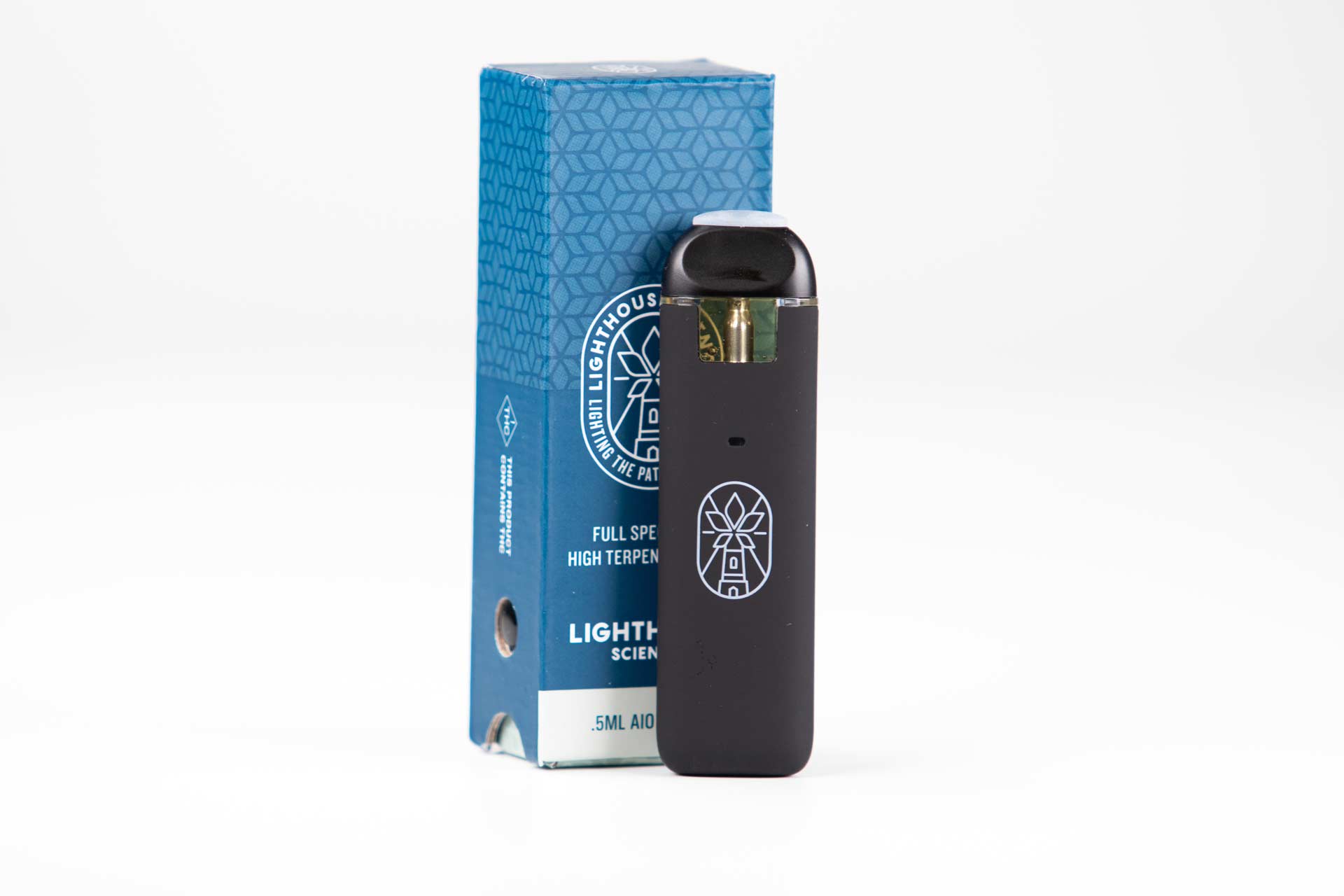
Where Can I Buy THC Oil for my Vape Pen?
If you’re in the market for THC oil but don’t know where to start, visiting one of Ohio’s many medical marijuana dispensaries is a great idea.
Check out this document from the Ohio Medical Marijuana Control Program for a complete list of dispensaries certified by the state of Ohio.
Everything Ohio Cannabis Consumers Should Understand About Live Resin (and Ohio's Top Live Resin Brands)
Here’s everything patients need to know about live resin, a relatively new medical cannabis consumption method seeing increasing popularity.
Live resin is a fresh, potent, high-quality medical cannabis concentrate with a vibrant aroma and flavor profile. Live resin is created by flash freezing cannabis and then extracting the cannabinoid compounds, resulting in a high-potency medicinal product with a unique terpene profile.
Cannabis extractions are all the rage, with a new breed of patients hunting for a concentrated dose of medicine with delicious aromas and rich medicinal effects.
Live resin is leading the way for this new crop of medical cannabis concentrate styles.
But what is live resin, and where did it come from? Let’s dabble in the art of medical cannabis products and learn the answer to those burning questions and more.
Quick Links
- What is Live Resin?
- How Is Live Resin Made?
- A Brief History of Live Resin
- Why Does Live Resin Skip the Drying and Curing Process?
- What Does Live Resin Look Like?
- Does Live Resin Make You High?
- What Are The Benefits Of Live Resin?
- How Do You Consume Live Resin?
- How Do You Store Live Resin?
- How Much Does Live Resin Cost?
- What Live Resin Products are Available in Ohio?
What is Live Resin?
Live resin is a concentrate produced from flash-frozen, fresh cannabis plants. It is renowned for its prominent flavors, high quality, and medicinal potency.
More of its flavonoids and terpenes are preserved because live resin is extracted from newly harvested cannabis plants that have never been dried or cured. Thus, live resin offers a more delicious and aromatic experience, perfect for medical cannabis connoisseurs and new customers interested in the plant’s more effective medicinal side.
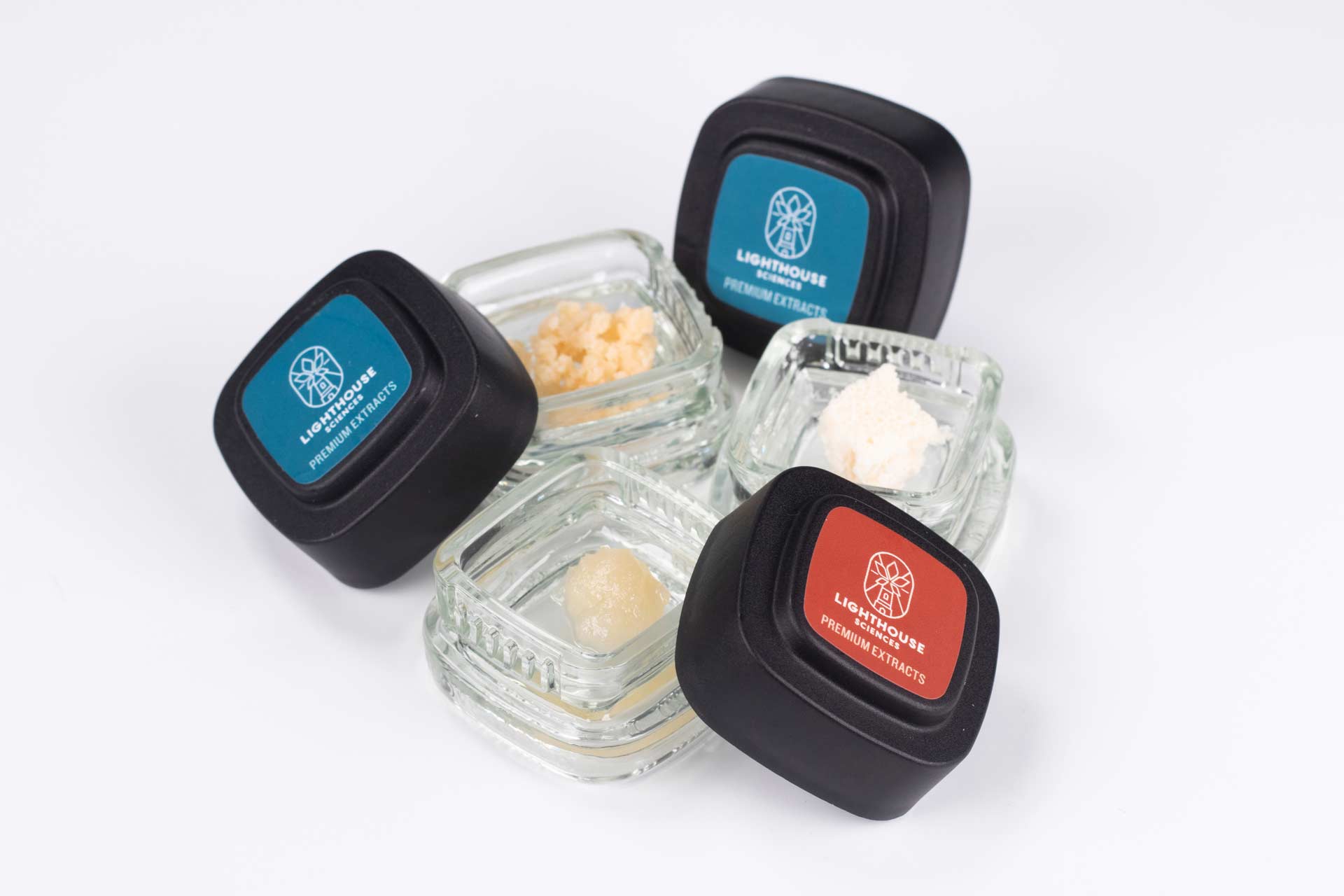
How is Live Resin Made?
Making live resin encapsulates the essence of live cannabis plants; the plants are frozen as soon as they are harvested and spared from drying and curing. Generally, fresh cannabis is frozen with liquid nitrogen or placed in a dry ice freezer.
Uncured cannabis is kept frozen for up to 36 hours and is thawed immediately before the extraction process when put through a chilled solvent, such as butane or propane. Next, the solvents are evaporated and purged at a low temperature using a vacuum oven, leaving only the pure extract.
After the extraction process, manufacturers can choose to restore any lost terpenes or cannabinoids, depending on their product specifics. However, because the live resin process preserves the heart and soul of live cannabis, adding scent and flavor is not necessary.
Producing live resin requires professional manufacturing equipment. Skilled manufacturers follow strict protocols to guarantee that live resin is made safely, and they thoroughly test their products to ensure no residual solvents. Therefore, amateur growers and extractors should not attempt to produce live resin (you should leave it to professionals like us).
A Brief History of Live Resin
The extraction revolution is real!
And nowhere is this more evident than with live resin, the history of which traces back to two innovative minds. In 2013, cultivator William “Kind Bill” Fenger and lab founder Jason “Giddy Up” Emo melded their minds to produce the world’s first-ever live resin batch.
Their experiment continued with Fenger and Emo refining the process over 24 hours. They knew they had something special at the end of their lab work.
Why Does Live Resin Skip the Drying and Curing Process?
Flash freezing cannabis right after it is harvested allows the plant to retain its terpenes—the aroma and effects powerhouses of the bud. When dried and cured, air, heat, and light significantly diminish marijuana’s signature terpenes and flavor. Trichomes, which house these valuable terpenes, are also damaged by the persistent handling required for drying and curing.
Skipping the drying and curing process allows trichomes and terpenes to remain intact from the live plant to the dab rig or pen. In addition, live resin’s natural scents and tastes make for a gratifying medicinal experience full of vitality and vibrance.
What Does Live Resin Look Like?
Live resin varies in color from white to dark yellow to amber and exists in various forms, including sugar, badder, budder, sap, wax, and more.
Its appearance depends on the strain, extraction process, and post-extraction alterations. A sample of live resin might be compared in texture to raw honey mixed with syrup, melting sugar crystals, or caviar, and it is undoubtedly more delicious!
Like its concentrate counterparts, live resin is super sticky and malleable. Some live resin concentrates are looser than others as looseness increases with terpenes—the looser, the more terpenes, the more aromatic the experience.
While live resin can come in several slightly different forms and textures, it will always produce the same effect—a potent medicinal experience.
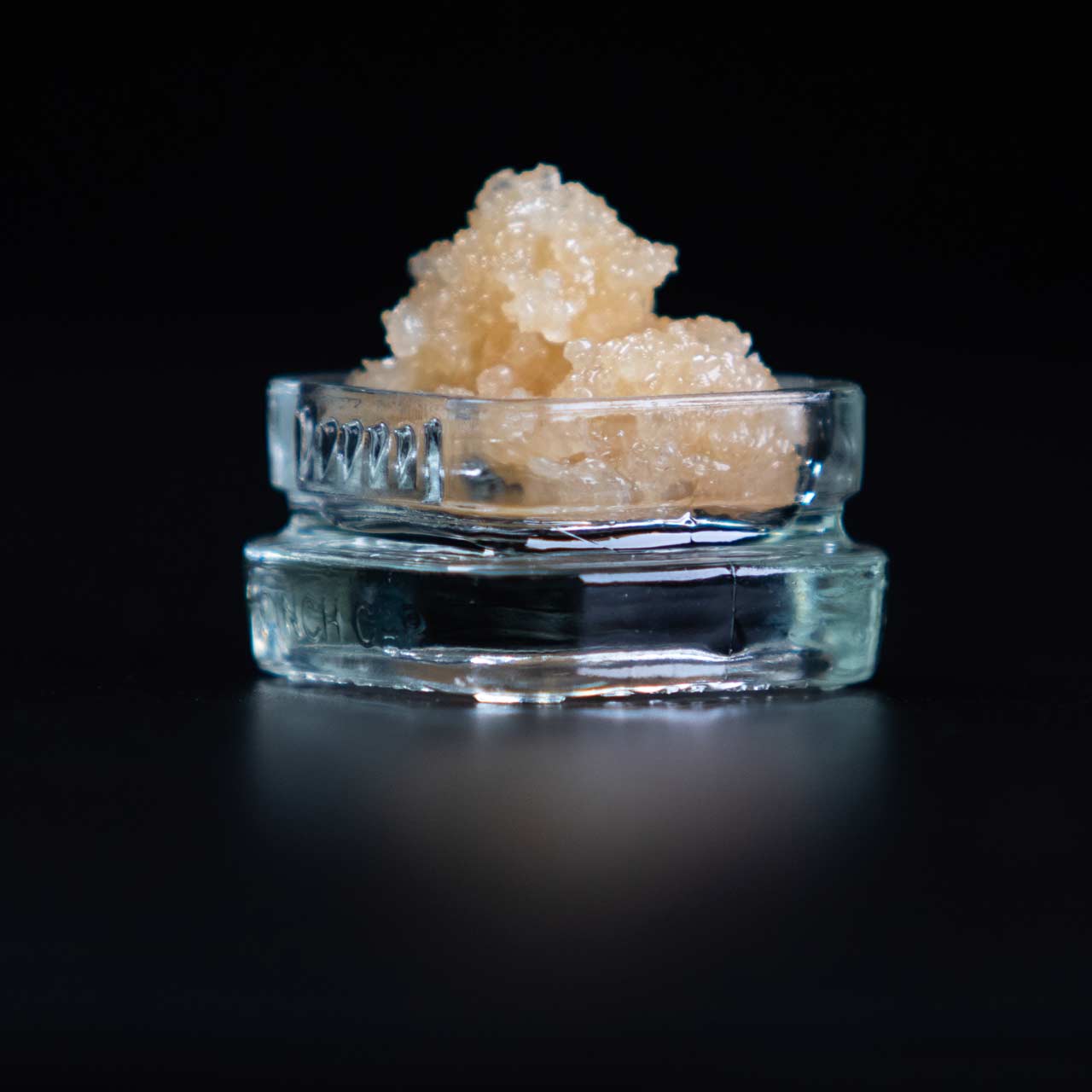
Does Live Resin Make You High?
Creating live resin conserves its intense aroma and allows for pure potency.
Live resin is a high-quality concentrate, so consuming live THC resin can create a potent medicinal experience. Depending on the concentrate’s strain, variety, and preparation, live resin’s THC can range from 65 to 95 percent.
As with any potent cannabis product, low and slow is the name of the game. The live resin experience can be pretty intense; even seasoned patients are urged to build up to their desired experience.
What Are The Benefits Of Live Resin?
Everyone in the medical cannabis chain, from growers and cultivators to patients, can reap the benefits of live resin.
Connoisseurs and new patients can bask in live resin’s vivid flavors and aromas and its strength—a little goes a long way, meaning more medicinal impact for your buck.
On a deeper level, high-quality concentrates like live resin can enhance therapeutic benefits.
The chemical profile of the live cannabis plant is kept intact so that patients can experience the full entourage effect. Cannabinoids, flavonoids, terpenes, and other principal compounds work synergistically to deliver medicinal benefits.
How Do You Consume Live Resin?
Dabs are the most common way to consume live resin, but you can also vape or mix live resin into edibles.
Dabbing: Live resin is most often consumed via dabbing. A dab tool with a spoon or scoop shape is recommended to dab resin, as the concentrate is gooey and dense. You’ll also need other necessary equipment: a dab rig, nail, and torch. Once your setup is good to go, get ready for a memorable medicinal experience.
Live resin’s terpene-forward nature calls for low temp dabbing. If your nail is too hot, you risk vaporizing the extraordinary flavors and scents of the medicine. On the flip side, if your nail temperature is too low, you might inadequately activate the resin’s potent cannabinoids and terpenes.
Still, there is a sweet spot, somewhere between 315 and 450 degrees, to get the most out of your live resin dabs. With a bit of trial and error, you’ll perfect the temperature and find your optimal zone.
Vaping: Vaping live resin is simple and effective. Instead of a vape pen, you’ll need a dab pen designed for cannabis concentrates. Like dabbing, you’ll want a dab tool with a spoon or scoop shape when loading the live resin into your dab pen.
Set the temperature and draw in some of that medicinal live resin mist once you’ve scooped the desired amount into the pen oven or bowl.
Vaping with Carts: If scooping splendidly sticky concentrate into a dab pen isn’t your thing, don’t worry! You can utilize pre-packed cartridges to vape live resin.
Live resin cartridges are just like vape oil cartridges in that they can be connected to a battery, heated, and inhaled. The only difference is that the cart is filled with rich medicinal live resin instead of a more typical concentrate.
Edibles: Making edibles from live resin or other concentrates allows medical cannabis chefs and bakers to skip the tedious hassle of extracting THC for use in cannabutter or canna-oil. Pre-made edibles are also up and coming on the market, and they are a superb choice for anyone who likes to ingest their medicine.
Since live resin is highly potent, it is essential to portion and dose any edibles created with the concentrate properly. Again, low and slow wins the day.
How Do You Store Live Resin?
An air-tight, light-proof container is live resin’s preferred habitat.
Ensure that your live resin is kept in a cool place where it’s not exposed to moisture. Open-air, light, and heat can cause terpenes to degrade and the resin to harden, which is not optimal.
To preserve the freshness and fullness of your live resin, store it at room temperature or below, preferably in a glass or silicone jar. Then, when you’re done using your live resin for the night, tuck it away safely and securely, and maybe even sing it a little lullaby as it drifts off to sleep.
How Much Does Live Resin Cost?
Live resin fetches a higher premium than other medical cannabis concentrates. However, its intricate production process, high THC content, and robustness make the cost worth it. Plus, because it is so powerful, a little bit is all that’s necessary to feel the full medicinal effects. So, in the long run, you will most likely consume less than you will of other products, and the cost will balance out.
What Live Resin Products are Available in Ohio?
With cannabis legal for medicinal use in Ohio, there’s plenty to choose from. The state of Ohio’s array of available cannabis products includes dry flower, oils, tinctures, topicals, and extracts, including live resin.
As for specific cannabis product brands available in Ohio, it’s a list that includes:
- Lighthouse Sciences
- Ancient Roots
- Buckeye Relief
- Butterfly Effect
- Cokoh
- Columbia Care
- Cresco
- Firelands Scientific
- Grow Ohio
- Hon
- Main Street Health
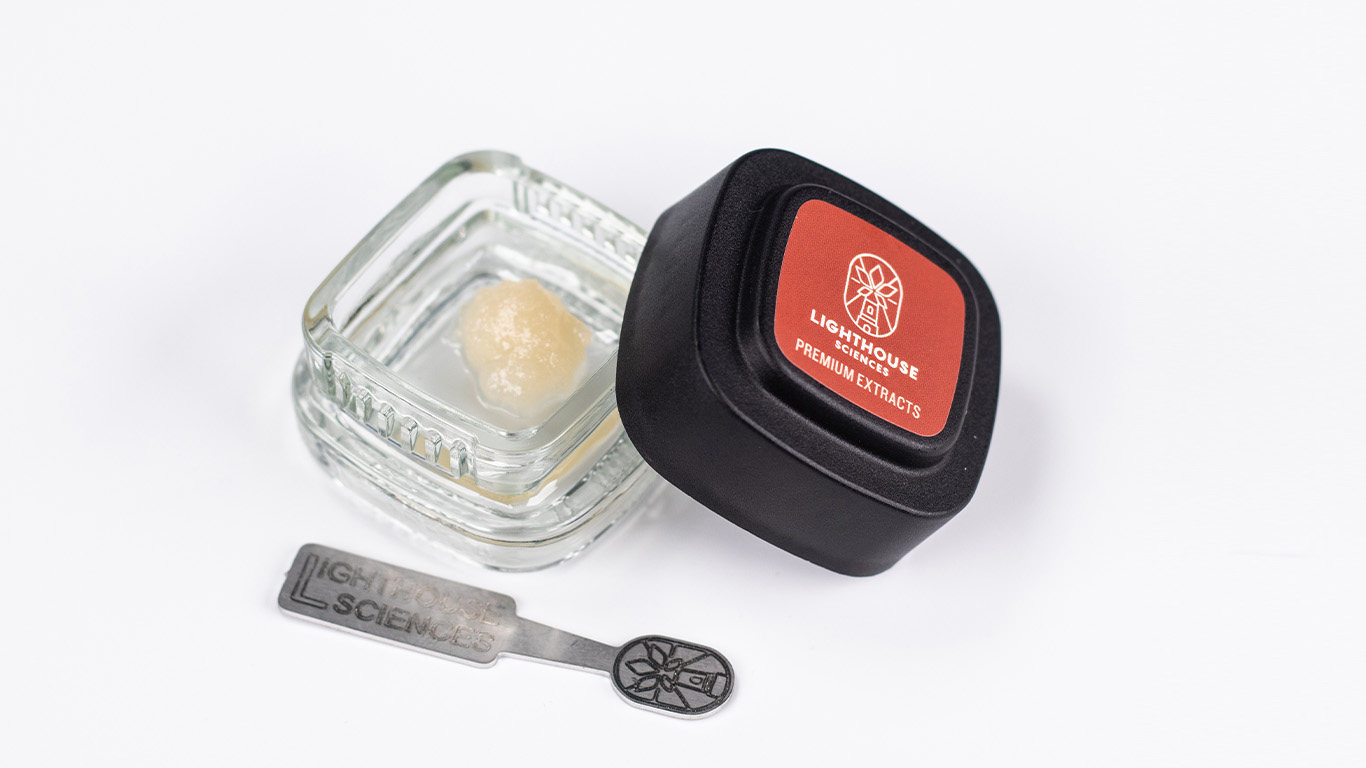
Lighthouse Sciences believes in the therapeutic potential of cannabis. This belief drives us to champion all of our cannabis products that impart holistic ingenuity on the road to wellness.

